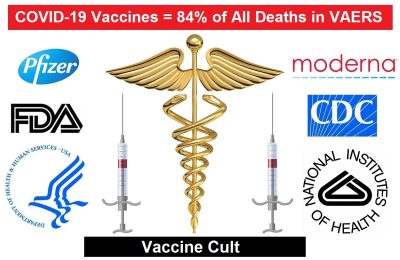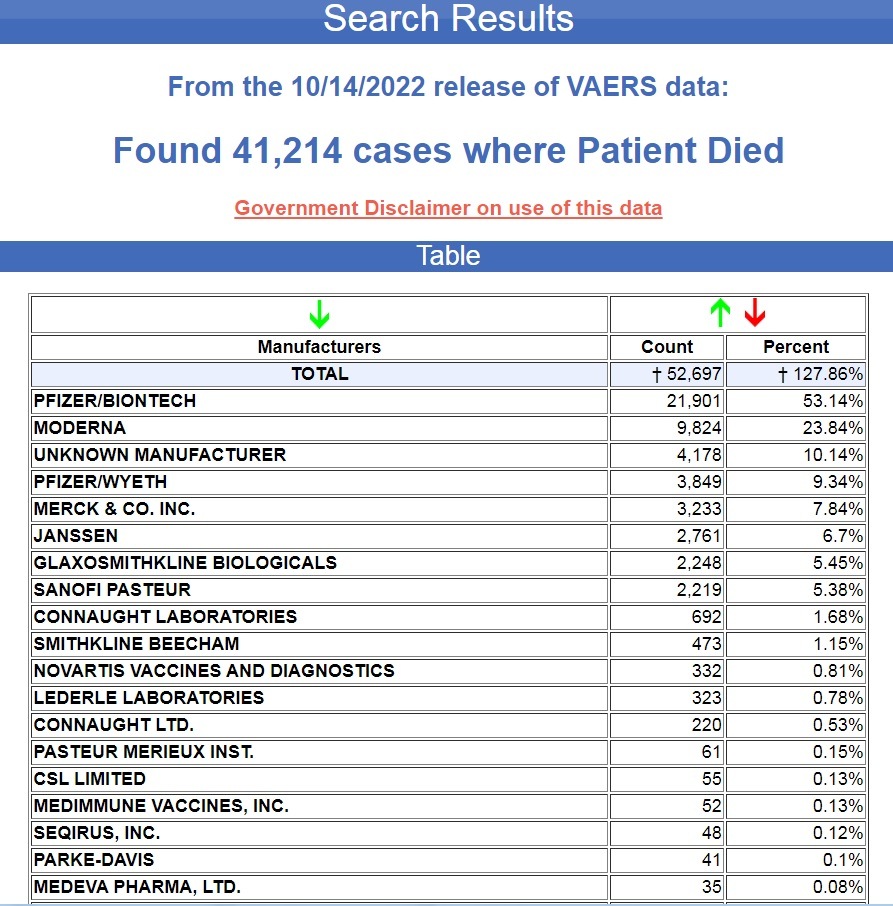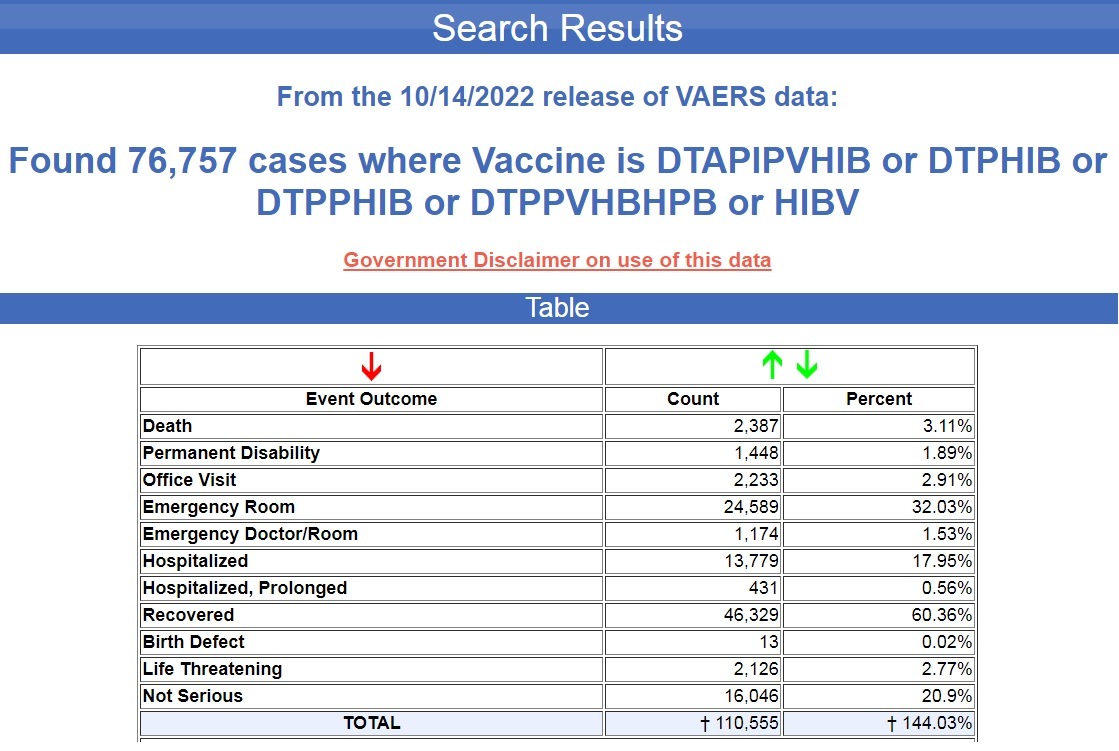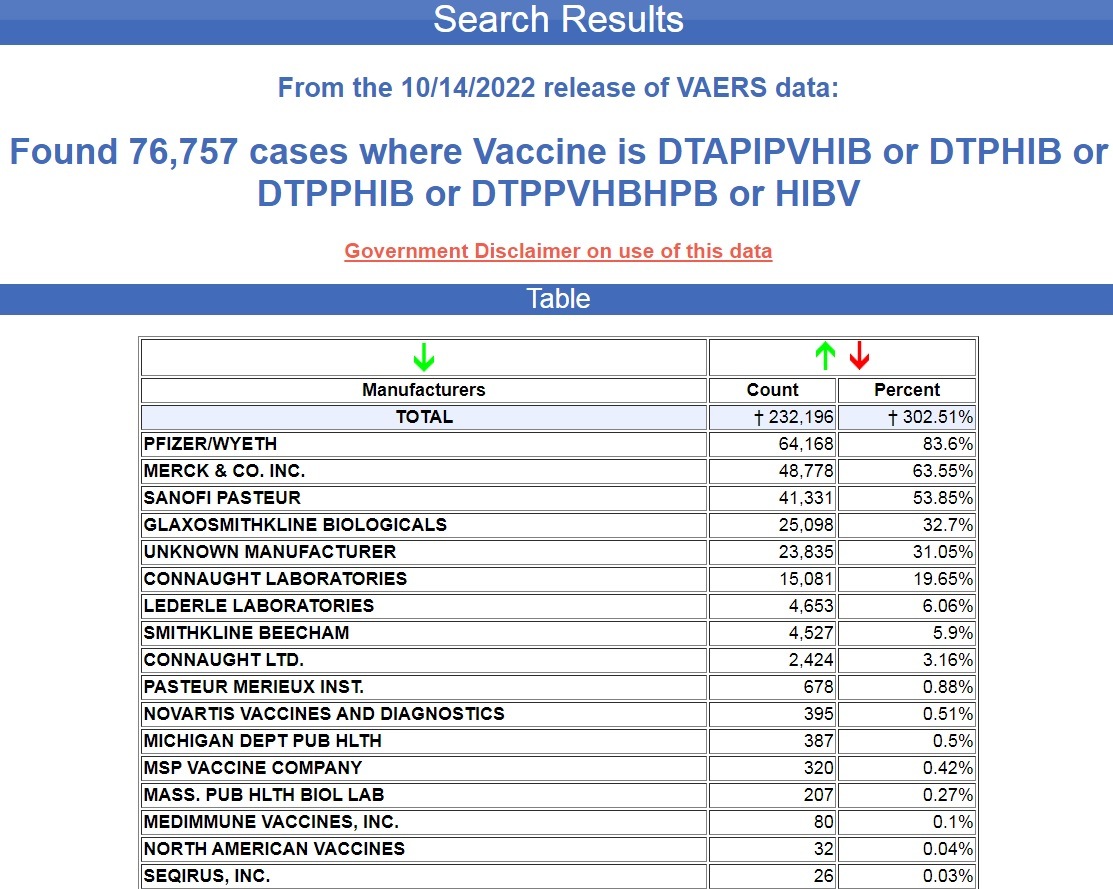COVID-19 Vaccines Have Caused 84% of All Deaths Recorded in VAERS for the Past 32 Years – Pfizer #1 in Vaccine Deaths, Even Before COVID

All Global Research articles can be read in 51 languages by activating the Translate Website button below the author’s name.
To receive Global Research’s Daily Newsletter (selected articles), click here.
Follow us on Instagram and Twitter and subscribe to our Telegram Channel. Feel free to repost and share widely Global Research articles.
***
The U.S. Government Vaccine Adverse Events Reporting System (VAERS) was started in 1990 to track injuries and deaths reported after receiving a vaccine. Congress mandated by law that the government maintain this database as part of the National Vaccine Injury Compensation Program.
The National Vaccine Injury Compensation Program is a no-fault alternative to the traditional legal system for resolving vaccine injury petitions.
It was created in the 1980s, after lawsuits against vaccine companies and health care providers threatened to cause vaccine shortages and reduce U.S. vaccination rates, which could have caused a resurgence of vaccine preventable diseases.
Any individual, of any age, who received a covered vaccine and believes he or she was injured as a result, can file a petition. Parents, legal guardians and legal representatives can file on behalf of children, disabled adults, and individuals who are deceased. (Source.)
Since the emergency use authorization of the COVID-19 vaccines in December of 2020, through the latest update of the VAERS database on October 14, 2022, 84% of all deaths reported after vaccination for the past 31+ years have been reported following COVID-19 vaccines. (Source.)

The company that has produced the most vaccines resulting in deaths recorded in VAERS is Pfizer, and they held that top honor even before they partnered with Biontech to produce their mRNA COVID-19 vaccine, when they partnered with Wyeth to produce other various vaccines.
Moderna, which had never produced a vaccine before producing their mRNA COVID vaccine in 2020, now holds the second spot at nearly 24% of all deaths ever recorded following a vaccine injection. (Source.)

As the public becomes more aware of these government statistics in VAERS, there are efforts to downplay their significance. One argument is that since there were so many doses of the COVID-19 vaccine administered, the statistics are naturally higher for adverse events following COVID-19 vaccines.
Well, that claim is very easy to debunk using the U.S. Government’s own statistics.
The National Vaccine Injury Compensation Program has published a report that lists the total number of doses administered for all FDA approved vaccines from 2006 through 2021. You can view the .pdf here on the U.S. Government website.
So let’s compare the number of cases filed in VAERS and the number of deaths reported to VAERS for the second most deadly vaccine according to VAERS, which HIB, Haemophilus influenzae, a vaccine that is primarily given to babies and children under the age of 5.
Prior to the COVID-19 EUA vaccines, it was the most deadly vaccine given to children.
Here is what the CDC says about the HIB vaccines:
Why get vaccinated?
Hib vaccine can prevent Haemophilus influenzae type b (Hib) disease.
Haemophilus influenzae type b can cause many different kinds of infections. These infections usually affect children under 5 years of age but can also affect adults with certain medical conditions. Hib bacteria can cause mild illness, such as ear infections or bronchitis, or they can cause severe illness, such as infections of the blood. Severe Hib infection, also called “invasive Hib disease,” requires treatment in a hospital and can sometimes result in death.
Before Hib vaccine, Hib disease was the leading cause of bacterial meningitis among children under 5 years old in the United States. Meningitis is an infection of the lining of the brain and spinal cord. It can lead to brain damage and deafness.
Hib infection can also cause:
- Pneumonia
- Severe swelling in the throat, making it hard to breathe
- Infections of the blood, joints, bones, and covering of the heart
- Death
Hib vaccine is usually given in 3 or 4 doses (depending on brand).
Infants will usually get their first dose of Hib vaccine at 2 months of age and will usually complete the series at 12–15 months of age.
Children between 12 months and 5 years of age who have not previously been completely vaccinated against Hib may need 1 or more doses of Hib vaccine.
Children over 5 years old and adults usually do not receive Hib vaccine, but it might be recommended for older children or adults whose spleen is damaged or has been removed, including people with sickle cell disease, before surgery to remove the spleen, or following a bone marrow transplant. Hib vaccine may also be recommended for people 5 through 18 years old with HIV.
Hib vaccine may be given as a stand-alone vaccine, or as part of a combination vaccine (a type of vaccine that combines more than one vaccine together into one shot).
Hib vaccine may be given at the same time as other vaccines. (Source.)
This is the information about HIB vaccines that the CDC provides for doctors to give to parents.
Here is the information that they do NOT give to these parents, which is what is recorded in VAERS for the HIB vaccines:

There have been 5 vaccines approved by the FDA that contain the HIB vaccine, and since they have been on the market, there have been 2,387 recorded deaths, 1,448 recorded permanent disabilities, over 25,000 visits to the ER, and over 14,000 hospitalizations.
And remember, this is on the CDC immunization schedule, and these shots are primarily given to babies and children under the age of 5.
If you are a parent considering giving this vaccine to your child, wouldn’t you want to know these statistics? And how many children under the age of 5 get HIB each year?
It is hard to find current stats because the CDC is famous for providing “estimates” and not raw data on causes of death, but a study published in 2012 looked at data from 1999 through 2008 in 5 states and 5 metropolitan areas representing a population of 27,779,979 in 1999 and 35,559,550 in 2008.
During that 9-year period they identified 4,839 cases of HIB, which included 828 children. That’s less than 100 children per year, and no children between the age of 1 and 17 died, and among the few deaths of children under 3 months of age, half of them were born prematurely.
And yet, the CDC keeps this vaccine in their immunization schedule for children, and every year thousands of cases of adverse reactions are filed in VAERS, and dozens of children die after receiving the vaccine, and those are just the cases filed in VAERS, which is vastly under-reported and only about 1% of all cases. (Source.)
And who are the companies producing these vaccines that keep making money off of them?

*
Note to readers: Please click the share buttons above. Follow us on Instagram and Twitter and subscribe to our Telegram Channel. Feel free to repost and share widely Global Research articles.
Featured image is from Health Impact News

